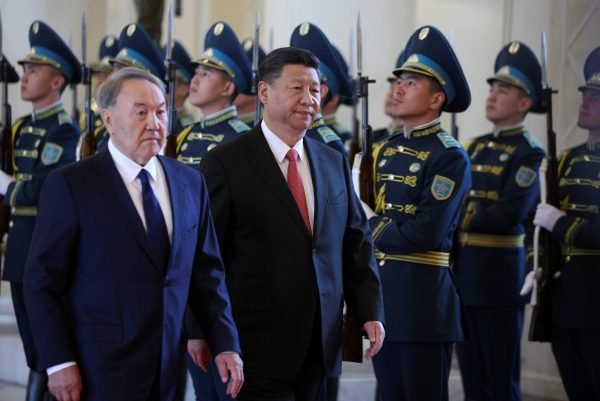With the accession of India and Pakistan to the Shanghai Cooperation Organisation, the total population of SCO countries has reached 3.1 billion. With a number this large, it is worth asking: what is the purpose of the SCO?
Is the SCO a potential opponent of the Western order? Not necessarily. The original SCO was born in 1996 with the aim of better defining post-Cold War borders, and not all its members are autocracies. It has one failed democracy (Kyrgyzstan), a number of personalistic autocracies (Kazakhstan, Uzbekistan and Tajikistan), a one-party state (China) and a complex case like Russia. India’s accession brings in a consolidated democracy, and Pakistan’s democratic credentials, although weak, have improved. The SCO is no ‘club of autocrats’, despite some superficial similarity.
Nor is the SCO a stepping stone for a new ‘international order’ led by China — their concerns about separatism, extremism and terrorism (the ‘Three Evils’ of the SCO Charter) reflect a broadly pro-status quo attitude. After all, China, Russia and India do not want to change the basic rules of a system from which they have largely benefited. They would rather look for a more important role within the current system.
Additionally, the budget is extremely small — less than US$4 million in recent years (the exact current amount is classified). This suggests that the SCO is a ‘talking shop’ rather than a true international organisation.
The SCO is most accurately understood as the result of a pragmatic convergence of interests. China intends to have a peaceful Central Asian ‘backyard’ to benefit from economic opportunities (especially in the energy industry) and to keep in regular contact with key players such as Russia and India. The SCO meeting in Astana between China’s President Xi and India’s Prime Minister Modi is indicative of the importance of China–India relations. Similarly, Russia needs China as a source of capital and to counterbalance the West, and Central Asian states depend on Russian security as well as Chinese trade and investments.
So pragmatism is a substantial motivator of the SCO’s agenda.
From a legal point of view, the SCO’s regional integration process is peculiar because of both its institutional aims and its ‘hyper-sovereign’ dimension.
The SCO ‘Three Evils’ doctrine — by which the member states aggressively fight and prevent terrorism, separatism and extremism — is the organisation’s core. This security-centred approach is unusual for a regional integration process, especially when compared with the primarily economics- and trade-focussed EU and Mercosur.
But equivalently, a comparison with the military-focussed NATO is inadequate, especially considering the connections and possible overlaps with China’s Belt and Road Initiative (BRI). The BRI is designed to reshape the connectivity of the Asian continent through a massive plan of infrastructure projects, and is hence outside the standard jurisdiction of regional security integration.
So comparisons between the SCO and the trade-focussed EU or the security-focussed NATO are misleading.
The second distinguishing aspect of the SCO is its ‘hyper-sovereign’ dimension. A general trend away from state-centred legal theory and the Westphalian international order can be noted in many regional integration processes. The nation-state as the highest level of sovereignty is in clear decline. In most processes of regional integration, states share sovereign powers in accordance with the nowadays mainstream idea that this is the best way to enhance their own agency.
By contrast, the SCO’s regional integration process is based on the ‘mutual respect of sovereignty’ and an acknowledgement that ‘differences in cultural traditions, political and social systems, values and model of development formed in the course of history should not be taken as pretexts to interfere in other countries’ internal affairs’. These are clear statements of the two principles of sovereign equality and of non-interference in internal affairs, which fits the strong state traditions of the SCO’s members. Giving these principles such centrality in the SCO strengthens the ‘hyper-sovereign’ tendencies of its member states. This is unique among regional integration processes.
This hyper-sovereign character is reinforced by the organisation’s legal and institutional structures, which are formalised in the aforementioned pro-state SCO Charter. The SCO’s decision-making power is in the hands of the Heads of State Council, which determines the political strategy of the organisation. This body is supported by the Heads of Government Council and by a mechanism of meetings at the ministerial level. Hence, the organisation’s decision making is concentrated into representatives of the hyper-sovereign states.
As a result of these considerations, the SCO should not be analogised or held in opposition to other regional integration processes, but should rather be considered for what it is: pragmatism.
Ernesto Gallo is an Honorary Research Associate at University College London.
Domenico Giannino is Associate Lecturer at London Metropolitan University.


The SCO was the necessary precursor of the BRI. Without a prior security pact, the US would have been able to undermine the BRI with ease.